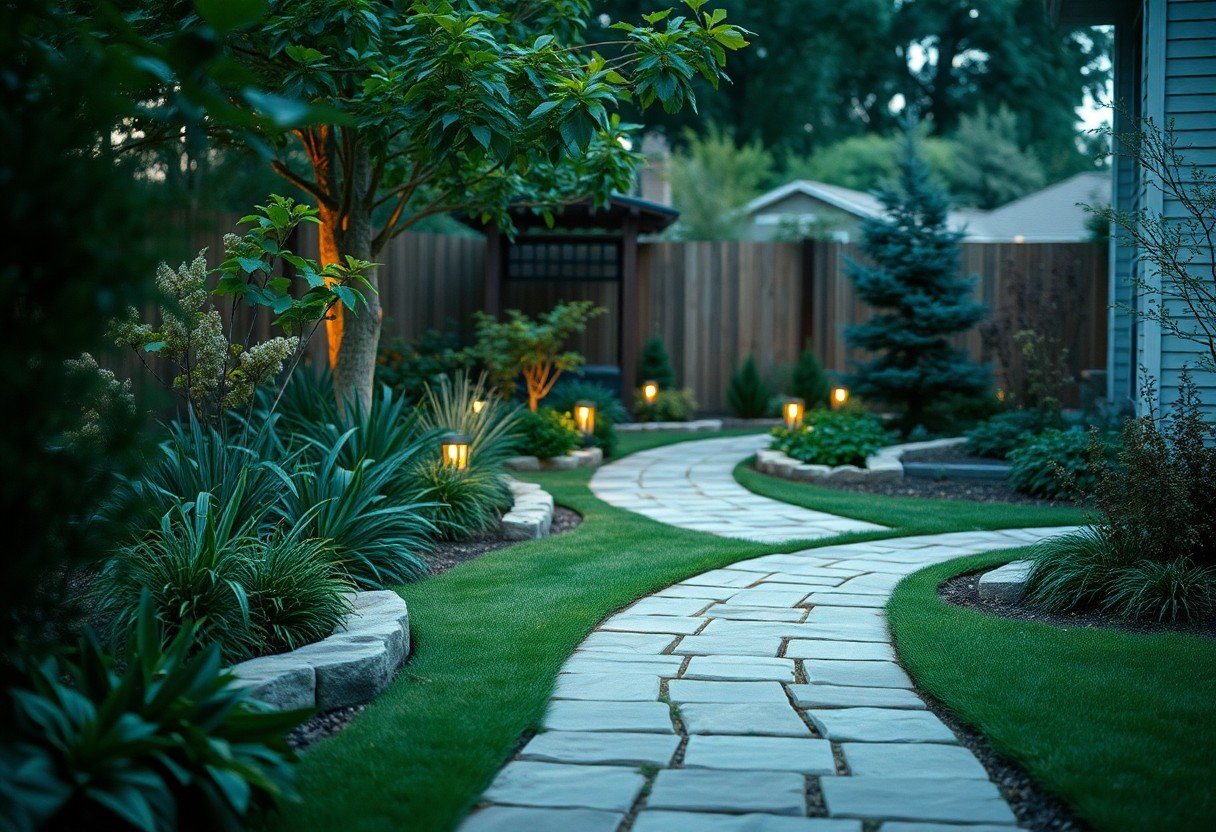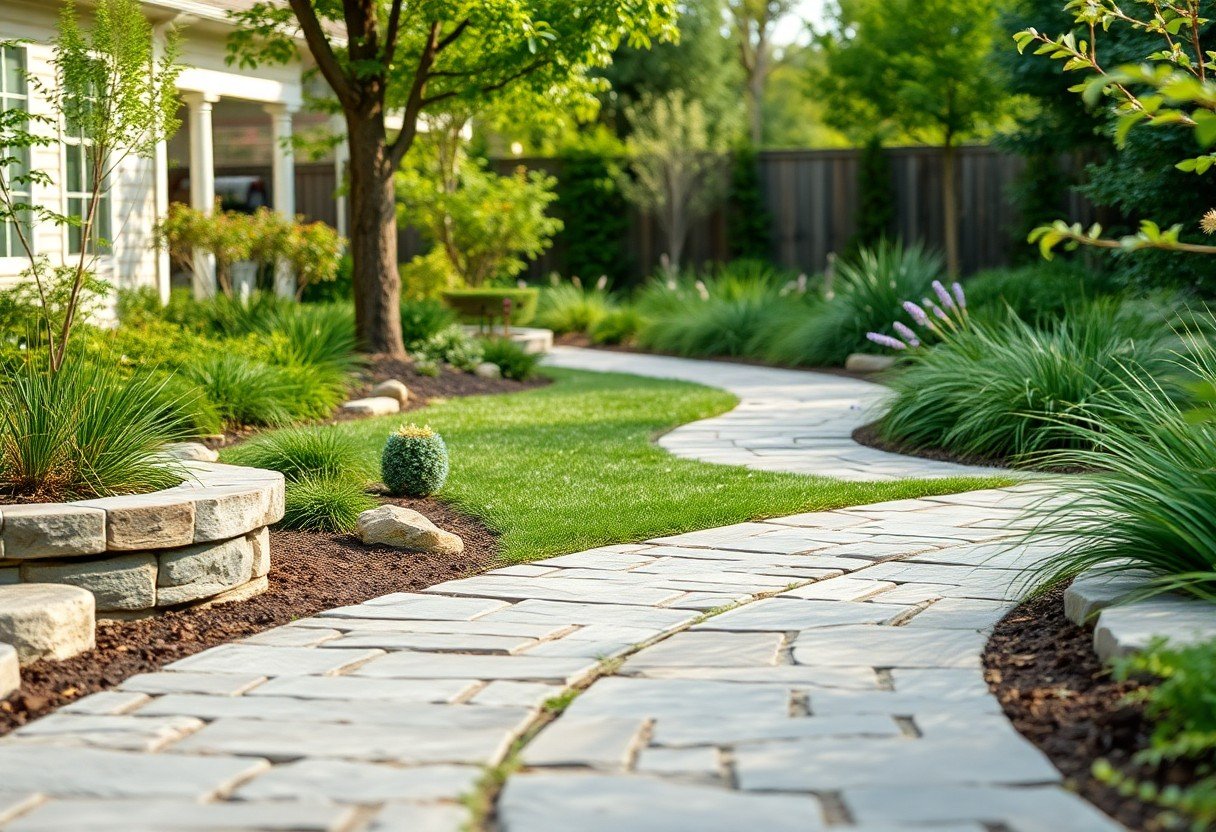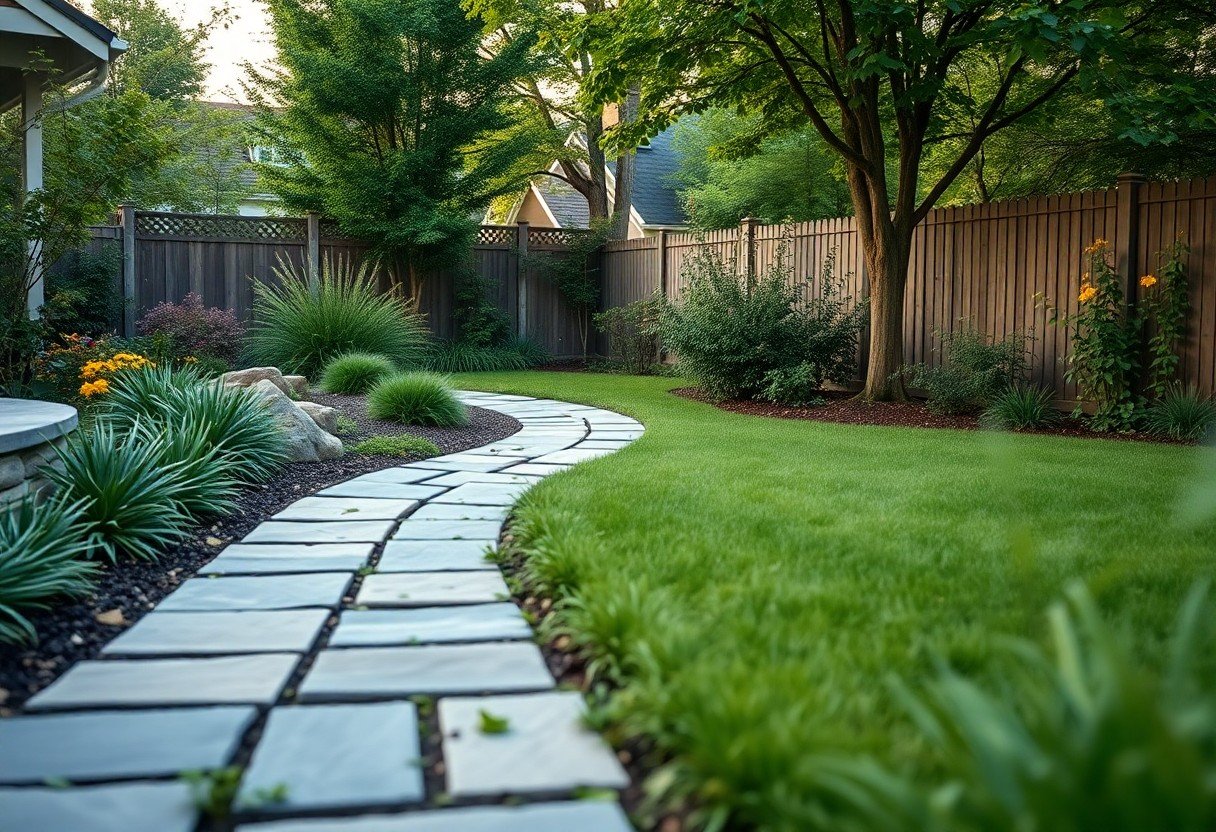As you plan to enhance your outdoor space this spring, you’ll want to consider installing garden paths that improve accessibility. You can achieve this by designing and building pathways that are safe and easy to navigate. For inspiration and guidance on minimizing soil disturbance, you can check out the discussion on Creating paths without destroying soil life : r/Permaculture. By following the right steps, you can create beautiful and functional paths that complement your garden’s natural beauty.
Planning and Preparation
For a successful garden path installation, you need to consider several factors, including your budget, the intended use of the path, and the overall aesthetic you want to achieve. You will want to think about the materials, design, and layout of your path to ensure it meets your needs and complements your garden.
Assessing Your Garden’s Terrain and Accessibility Needs
With your goals in mind, walk through your garden to identify areas that need improvement, considering the terrain, slope, and existing features, and think about how you can create a path that is accessible and easy to navigate for everyone.
Choosing the Right Materials for Your Path
Materials such as gravel, brick, and stone are popular choices for garden paths, and you should consider factors like durability, maintenance, and cost when making your decision, thinking about how they will fit with your garden’s style and your budget.
The type of material you choose will depend on your personal preferences, the amount of foot traffic the path will receive, and the overall look you want to achieve in your garden, and you should consider seeking advice from a professional if you are unsure about the best option for your specific needs, as they can help you make an informed decision and ensure your path is installed correctly.
Designing Your Path
Now that you’re ready to install your garden path, it’s time to think about the design. You’ll want to consider the overall look and feel of your garden, as well as the functionality of the path.
Considering the Route and Layout
Pathways should be carefully planned to ensure they are safe and easy to navigate. You should think about the route your path will take, considering any obstacles or challenges in your garden.
Selecting the Best Surface Type for Your Needs
Layout is key when it comes to choosing the right surface for your path. You’ll want to think about the materials that will work best for your garden, taking into account factors like maintenance and accessibility.
Type of surface you choose will depend on your personal preferences, budget, and the intended use of the path. You can choose from a variety of materials, such as gravel, brick, or concrete, each with its own unique benefits and drawbacks, and you should consider factors like durability, maintenance, and aesthetic appeal when making your decision.
Pre-Installation Tips and Factors
You should consider several factors before installing garden paths, including:
- path material
- width and length
Thou shalt ensure your garden path is safe and functional.
Checking Local Regulations and Permits
Factors affecting your garden path installation include local ordinances and permits, consider these before starting your project to avoid potential issues.
Preparing the Ground for Installation
Checking the ground condition is imperative, you need to clear the area of debris and level the ground to ensure a smooth installation process.
Plus, you will need to assess the soil type and drainage, as this will impact the choice of materials and the path’s durability, you should also mark out the path’s layout to visualize the final result and make any necessary adjustments before proceeding with the installation.
Installation Guide
After preparing your garden, you can start installing your path, for more inspiration check Walk This Way: 14 Affordable DIY Garden Path Ideas to ensure a smooth process.
Laying the Path Surface
Once you have your materials, one of the first steps is to lay the path surface, making sure it’s level and even, allowing you to achieve a professional finish.
Edging and Finishing Touches
Laying the final touches, you will need to add edging to your path, this will help to keep your path looking neat and prevent weeds from growing.
Another aspect to consider when adding edging and finishing touches is the type of material you will use, as you want it to complement your path and the overall design of your garden, ensuring your path is both accessible and visually appealing.
Maintenance and Upkeep
Many garden paths require regular maintenance to ensure they remain accessible and safe. You will need to perform tasks such as cleaning and inspecting your paths to prevent damage and tripping hazards.
Regular Cleaning and Inspection
For your garden paths to last, you should regularly sweep and clean them to prevent debris buildup. You can use a broom or a leaf blower to remove leaves and other debris, and then inspect your paths for any damage or wear.
Repairing and Replacing Damaged Sections
Clearly, damaged sections of your garden path can be hazardous, so you should address them promptly. You can use materials such as asphalt or concrete to repair damaged areas, and replace sections that are beyond repair.
It is vital to assess the damage to your garden path and determine the best course of action for repair or replacement. You should consider factors such as the type of material used, the extent of the damage, and your budget when deciding how to proceed with repairs or replacement, and take necessary steps to ensure your garden path remains safe and accessible for everyone.
Additional Tips for Improved Accessibility
Unlike other outdoor features, garden paths require careful planning for accessibility. You can consider:
- Wide paths for easy navigation
- Non-slip surfaces
Assume that incorporating these elements will enhance your outdoor space.
Incorporating Lighting and Signage
Additionally, you should think about adding lighting and signage to guide visitors through your garden, making it easier for them to navigate.
Ensuring Path Width and Clearance
Also, consider the width and clearance of your paths, ensuring they are suitable for all users, including those with mobility aids, to navigate your garden comfortably.
Improved accessibility in your garden paths starts with careful planning, taking into account the needs of all users. You can achieve this by considering the materials, design, and features that will make your outdoor space enjoyable and accessible for everyone, allowing you to create a beautiful and functional garden that you can enjoy for years to come.
Conclusion
On the whole, you can enhance your garden’s accessibility by installing garden paths this spring. You will be able to navigate your outdoor space with ease, creating a more enjoyable experience. For more information, visit Designing Serene Garden Paths: A Practical Guide to learn how to create your perfect path, tailored to your specific needs, and make your garden a serene oasis that you can appreciate all year round, with your newly improved garden paths.



